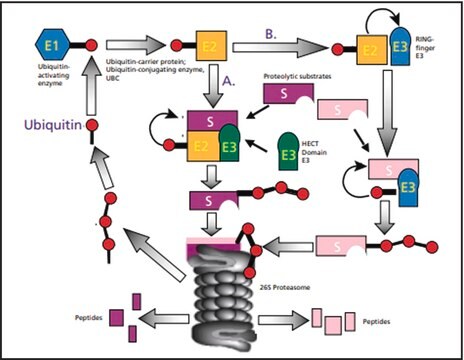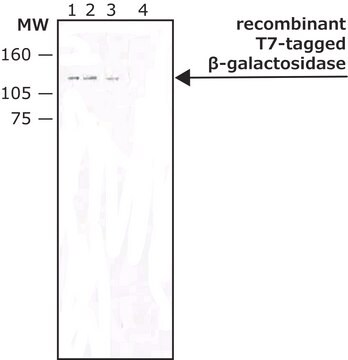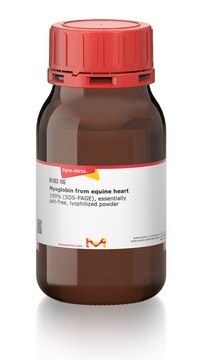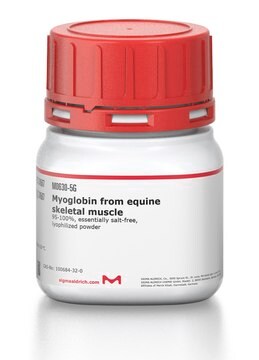U6253
Ubiquitin from bovine erythrocytes
BioUltra, ≥98% (SDS-PAGE), essentially salt-free, lyophilized powder
Sinónimos:
ATP-dependent proteolytic factor, Ub
About This Item
Productos recomendados
origen biológico
bovine erythrocytes
Línea del producto
BioUltra
Ensayo
≥98% (SDS-PAGE)
Formulario
essentially salt-free, lyophilized powder
condiciones de almacenamiento
(Tightly closed. Dry)
técnicas
western blot: suitable
impurezas
salt, essentially free
solubilidad
water: 1 mg/mL, clear, colorless
Nº de acceso UniProt
temp. de almacenamiento
2-8°C
Información sobre el gen
bovine ... LOC(101902760)
¿Está buscando productos similares? Visita Guía de comparación de productos
Categorías relacionadas
Descripción general
Ubiquitin is a highly conserved regulatory protein. It is found in all eukaryotic cells and is virtually identical across all forms of life including yeast, humans, and plants. ubiquitin structure contains seven Lys residues and an N-terminus, all of which are target sites for ubiquitination.
Aplicación
Ubiquitin from bovine erythrocytes can be used for in vitro ubiquitinylation assay. The product can also be used as a marker in western blotting.
Acciones bioquímicas o fisiológicas
Nota de preparación
anticuerpo
Código de clase de almacenamiento
11 - Combustible Solids
Clase de riesgo para el agua (WGK)
WGK 3
Punto de inflamabilidad (°F)
Not applicable
Punto de inflamabilidad (°C)
Not applicable
Equipo de protección personal
Eyeshields, Gloves, type N95 (US)
Elija entre una de las versiones más recientes:
¿Ya tiene este producto?
Encuentre la documentación para los productos que ha comprado recientemente en la Biblioteca de documentos.
Nuestro equipo de científicos tiene experiencia en todas las áreas de investigación: Ciencias de la vida, Ciencia de los materiales, Síntesis química, Cromatografía, Analítica y muchas otras.
Póngase en contacto con el Servicio técnico







